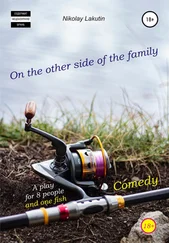Cassirer asks the question, How can a sensory content become the vehicle of meaning? and answers in effect that it cannot, unless it, the symbol, the word, the rite, the art form, itself constitutes the meaning. (And here, as much as in Hegel, or for that matter, as in naturalist anthropology, there is excluded in the assumption any criterion of truth or value except an evolutionary one — in this case the extent to which the symbol is elaborated: Thus the Mass is indeed a “higher” form than a native dog dance, but only in the sense that it is more highly developed.) According to Cassirer, the only alternative to an idealist theory of meaning is a skeptical one, and to Urban the particular skepticism of the causal sign theories. As Richards puts it: We can never expect to know what things are but only how they hang together.
How indeed can a sensible, a vocable, an odd little series of squeaks and grunts, mean anything, represent anything? Therein surely lies the mystery of language. The word buttermilk and the word William (if I know a William) mean, represent, the objects referred to in a wholly different sense than thunder means rain, and different too from the etymological intention of the word. There is an articulation of word to thing so powerful that word can still be taken for thing (i.e., the false onomatopoeia of words like fuzzy, scream, limber, slice). Is not a profound avenue of thought opened up by the realization that the sound I make can become for me the thing I see? Marcel has said that when I ask, “What is that flower?” I am not satisfied merely to be given a definition. I am only satisfied to be told, “That flower is a lupin,” even though the word lupin may convey nothing to me.
But now we find the real paradox — the first unscientific answer, which consisted in giving the name of the flower, although it had practically no rational basis, yet satisfied the demand in me which the interpretation by reduction tends on the contrary to frustrate.
Can this satisfaction be dismissed as just a prelogical remnant of the superstition of identifying words with things, or is this “superstition” in fact the very condition of our knowledge (and our ignorance)? When I am told as a child that this flower is a lupin, when you name something for me and I confirm it by saying it too — what I know now is not only that the flower is something but that it is something for you and me. Our common existence is validated. It is the foundation of what Marcel calls the metaphysics of we are instead of I think.
What then is this extraordinary faculty, if as Mrs. Langer believes, it is neither a refinement of an animal function nor an idealist logos which constitutes the world? It is, according to Mrs. Langer, a basically human need.
This basic need, which is certainly obvious only in man, is the need of symbolization.
Symbolization is the essential act of the mind, whether it be in art, in language, in rite, in dreams, in logic, and as such cannot be grasped by conventional biological concepts. It is an “elementary need” of the new cerebral cortex. There is no other way, it appears, of accounting for the “impractical” uses of language and the “perversity of ritual.”
Now something is wrong here.
In what sense does Mrs. Langer speak of a “need”? Everyone agrees that in the genetic or naturalist schema the responses of an organism to the environment are adaptive and are specified by the needs of the organism. These needs are variously characterized as sex, hunger, defense, etc., but are all reducible to the service of two basic biological requirements: maintenance of the internal milieu and parturition. Moreover, a response can be evaluated simply by the degree of success with which it fulfills the need. Now how can the basic human need of symbolization be subsumed under these valid biological categories? Can it be subsumed at all, except nominally: by calling it a “need,” a need of symbolization as there is a need of food? One represents things by symbols simply because one needs to do so. But a need in the biological sense is always but one term in a functional schema, thus, for example: need: sex, manifesting as drive: sexual activity, serving the function: propagation of species. Simply to call the symbolic transformation a need and let it go at that is to set up an autonomous faculty which serves its own ends, the equivalent of saying that bees store honey because there is in bees a need of storing honey.
This is an intolerable disjunction, intolerable from any reasoned point of view, whether it be materialism, idealism, or realism. On the one hand, Mrs. Langer has seen that the naturalist theory of meaning, however admirable may be its effort to account for all meaning under the one rubric of causal relation between organism and environment, leaves out precisely what she has hit upon as the very essence of meaning — on the other, she senses that there is no reason at all to drag in the whole apparatus of idealism with its denial of subsistent reality.
If the language symbol is not just a sign in an adaptive schema, and if it does not itself constitute reality but rather represents something, then what does it represent?
It is regrettably at this point that she drops the whole epistemological problem, so charged with implications, and turns to aesthetics. There she sets forth to perfection the truly distinctive character of the symbol: that it neither signifies another meaning nor constitutes meaning anew, but that it represents something. And so she can speak of the truth and falsity of the art symbol, according as it does or does not succeed in representing its subject.
If, by the same token, it ever be admitted in the field of cognition that the symbolic transformation is not an end in itself, a “need,” but a means, a means of knowing, even as is the art symbol — then the consequences are serious indeed. For it will be knowledge, not in the sense of possessing “facts” but in the Thomist and existential sense of identification of the knower with the object known. Is it not possible that this startling semantic insight, that by the word I have the thing, fix it, and rescue it from the flux of Becoming around me, might not confirm and illuminate the mysterious Thomist notion of the interior word, of knowing something by becoming something? that the “basic need of symbolization” is nothing more or less than the first ascent in the hierarchy of knowledge, the eminently “natural” and so all the more astonishing instrument by which I transform the sensory content and appropriate it for the stuff of my ideas, and that therefore the activity of knowing cannot be evaluated according to the “degree to which it fills a biological need,” nor according to the “degree to which the symbol is articulated,” but by nothing short of Truth itself?
It must remain to be seen how valuable a hermeneutic of knowledge Mrs. Langer’s new key will prove to be. We may admire the intrepidity with which she sets forth without regard for philosophical labels or consequences, while at the same time reserving the right to examine these latter, especially in view of her professions of allegiance. It is not impossible that the consequences of this particular “generative idea” may surprise even its gifted delineator.
A Martian View of Linguistic Theory,Plus the Discovery That an Explanatory Theory Does
Not Presently Exist, Plus the Offering of a Crude Explanatory Model on the Theory That
Something Is Better than Nothing
ALTHOUGH THE WRITER of this paper is not, strictly speaking, a Martian, his distance from and innocence of standard linguistic disciplines is, if not extraterrestrial, at least extralinguistic. Accordingly, this paper can commend itself to readers more by reason of its ignorance than its knowledge. What virtues it may have are mainly those of its perspective. I do not presume to compare myself to the boy who noticed that the king was naked nor linguists to the king’s subjects. Yet innocence — and distance — may have its uses. Just as a view of the earth from space may reveal patterns in forested areas and deserts which might be missed by the most expert foresters and geographers — because they are too close — so it is that what follows is what might be seen from a Martian perspective, that is to say, a perspective worlds removed from the several admirable disciplines of linguistics.
Читать дальше












